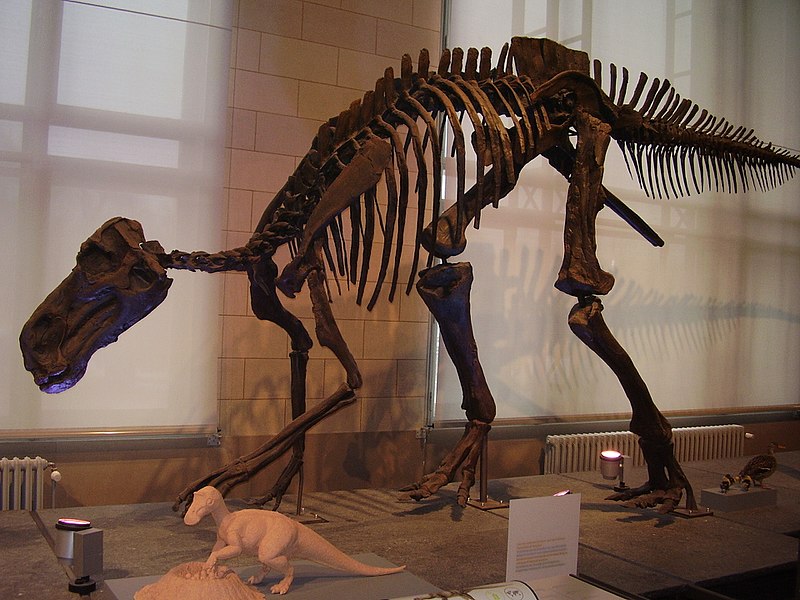Let’s face it, math isn’t the coolest subject out there — because nothing is cooler than dinosaurs. New research, however, is using the former to get a better understanding of the latter.

Image credits Vladimír Socha via Wikimedia.
We refer to physical differences between males and females of the same species as ‘sexual dimorphism”. This doesn’t include differences in their reproductive organs or genetic material, which is what separates the sexes by definition, but rather things like height, body proportions, the coloring on fur or feather, or secondary sexual characteristics (such as beards or breasts).
Virtually all complex organisms exhibit sexual dimorphism in one way or another. Most commonly it has something to do with attracting a mate and making as many babies as possible. Dinosaurs, a team of statisticians tells us, likely had such differences too.
Dinosaur dating, with math
“It’s a whole new way of looking at fossils and judging the likelihood that the traits we see correlate with sex,” says Evan Saitta, a research associate at Chicago’s Field Museum and the lead author of the new study.
“This paper is part of a larger revolution of sorts about how to use statistics in science, but applied in the context of paleontology.”
The issue with identifying sexual dimorphism in fossils is that they don’t preserve almost any information on soft tissues (where most of these differences lie). Furthermore, this lack of data makes it even harder to tell which of the differences we do see in fossils are owed to sexual dimorphism, and which to variation between closely-related species and subspecies.
A new paper uses statistical analysis to work around the issue. Since the data we can obtain from fossils themselves is incomplete, and judging them by the species living today can yield a lot of false results, the team turned to a technique called effect size statistics instead of more traditional approaches. In a nutshell, this technique is applicable to smaller datasets and estimates the degree of sex differences within that data; it also yields an uncertainty value about these results, so we know if the findings are reliable or not.
The actual math involved here is quite complex, as it tends to be with statistics. Suffice it to say, the team created an algorithm to process the data and then fed it measurements of dinosaur fossils. The program then returned estimates of body mass dimorphism and expected error levels. This latter value wouldn’t be calculated using other types of statistical analysis, the authors note.
“We showed that if you adopt this paradigm shift in statistics, where you attempt to estimate the magnitude of an effect and then put error bars around that, you can often produce a fairly accurate estimate of sexual variation even when the sexes of the individuals are unknown,” says Saitta.
The method is far from perfect and doesn’t tell us the complete story. For example, some of the team’s findings include a wide variation in size among the sexes for the dinosaur species Maiasaura, much more so than in others. One of the sexes grew around 45% larger than the other — that being said, the team can’t tell which one of them it was.
Despite being limited, it can go a long way to deepen our understanding of dinosaur biology. Reproduction (and its myriad branches, including sexual selection and dimorphism) is arguably the most important driver of evolution. Having a better understanding of how the dinos did it would give us a deeper look into how they lived. The ways the sexes were different from one another is a cornerstone of that.
The paper “An effect size statistical framework for investigating sexual dimorphism in non-avian dinosaurs and other extinct taxa” has been published in the Biological Journal of the Linnean Society.









